Battle Of Assandun: The Great Battle In English History And A Brief Period Of Viking Dominion In England
A. Sutherland - AncientPages.com - The Battle of Assandun was an important historical event that gave Canute the Great (Cnut Knut den Store) the Crown of England.
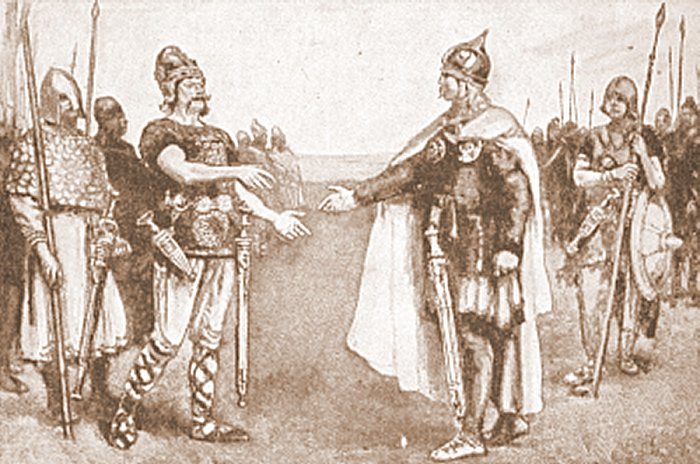 Edmund II Ironside and Canute the Great after Battle of Assandun.
Edmund II Ironside and Canute the Great after Battle of Assandun.
It took place on October 18, 1016, and was fought between Danish armies led by Canute the Great and the English army led by King Edmund II ('Ironside').
"Then he [Edmund] assembled his troops the third time, and they went to London, all north of the Thames, and looked out through Clayhanger, and he freed the populace and drove the enemy to their ships. It was within two nights after the king passed over at Brentford, where he fought the enemy and put them to flight: but there were many Englishmen who were drowned by their own carelessness; who had gone before the army to plunder…" (Anglo-Saxon Chronicle)
The battle was victorious for the Danes and helped them to retake the English territories. For many years, historians have argued in a way that unforunately does not give or have a result regarding the location of this critical battle and whether it took place.
Was Assandun – Ashdon, near Saffron Walden in north Essex, or Ashingdon near Rochford in southeast Essex, England?
After the battle, Edmund had to sign a treaty with Canute. By this treaty, all England except Wessex would be controlled by Canute. Additionally, if one of the kings should die, the other would take all of England, that king's son being the heir to the throne.
Edmund died on November 30, and Canute the Great assumed control of his territories. He was crowned King of England in January 1017.
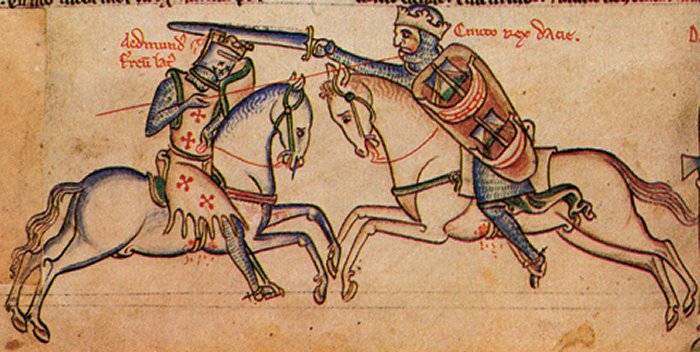 Edmund Eisenseite (left) in a duel with Knut the Great. (Representation from the Chronica Majora by Matthew Paris, around 1250). Image credit: Matthew Paris (1200–1259) - Public Domain
Edmund Eisenseite (left) in a duel with Knut the Great. (Representation from the Chronica Majora by Matthew Paris, around 1250). Image credit: Matthew Paris (1200–1259) - Public Domain
Thus for the first time, England became a single united kingdom, covering the same territory as it does today.
It also remained under Danish rule for the next 26 years.
Canute built a church, chapel, or similar holy site after winning a battle to commemorate the soldiers who died in battle.
A few years later, in 1020, the completion took the place of the memorial church known as Ashingdon Minster on the hill next to the presumed site of the battle in Ashingdon.
"King Canute ordered St Andrew's, "a church built of lime and stone for the souls of those slain in the Battle of Assandune 1016. It was dedicated in 1020 at a ceremony that King Canute and his officers attended. This battle was the decisive military encounter for the throne of England. Much of the church is now a 13C rebuild with a 14C tower. The rubble walls contain Roman tiles, and there are Saxon timbers in the tower."
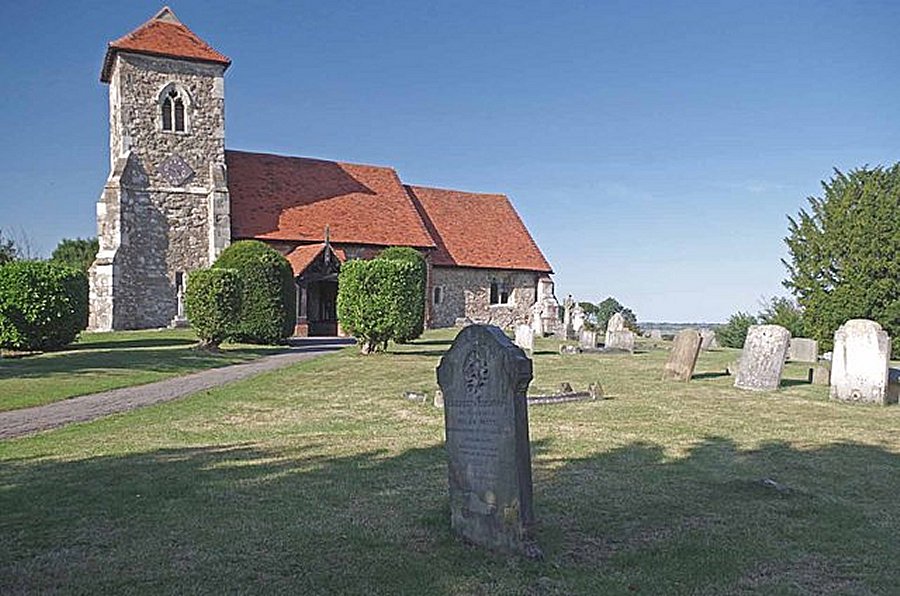 St Andrews Minster Ashingdon. There has been a church here since 1020. King Canute ordered its construction and attended the dedication. Much of the church was rebuilt in the Middle Ages. Image credit: © Copyright Glyn Baker and licensed for reuse under this Creative Commons Licence.
St Andrews Minster Ashingdon. There has been a church here since 1020. King Canute ordered its construction and attended the dedication. Much of the church was rebuilt in the Middle Ages. Image credit: © Copyright Glyn Baker and licensed for reuse under this Creative Commons Licence.
The church still stands to this day and is dedicated to Saint Andrew but is believed previously to have been dedicated to Saint Michael, who was considered a military saint: churches dedicated to him are frequently located on a hill.
Suppose Ashington was not the place of the battle. In that case, there is another possible location based on archaeological finds. Its location is Ashdon in the Essex area, where archaeologists unearthed Roman and Anglo-Saxon coins.
Written by – A. Sutherland - AncientPages.com Senior Staff Writer
Updated on January 21, 2024
Copyright © AncientPages.com All rights reserved. This material may not be published, broadcast, rewritten or redistributed in whole or part without the express written permission of AncientPages.com
Expand for referencesReferences:
More From Ancient Pages
-
 Cappadocia And Huge Unique Selime Cathedral
Featured Stories | Mar 19, 2019
Cappadocia And Huge Unique Selime Cathedral
Featured Stories | Mar 19, 2019 -
 Early Humans Were Probably Driven To Extinction By Climate Change- Study Suggests
Civilizations | Oct 15, 2020
Early Humans Were Probably Driven To Extinction By Climate Change- Study Suggests
Civilizations | Oct 15, 2020 -
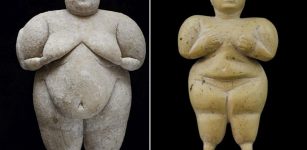 Figurines Unearthed At 9,000-Year-Old Çatalhöyük Site Symbolize Elderly Women, Not Goddess Cybele
Archaeology | Mar 1, 2017
Figurines Unearthed At 9,000-Year-Old Çatalhöyük Site Symbolize Elderly Women, Not Goddess Cybele
Archaeology | Mar 1, 2017 -
 Mysterious Rishis – Remarkable Ancient Sages And Scientists With Divine Knowledge In India
Featured Stories | May 17, 2017
Mysterious Rishis – Remarkable Ancient Sages And Scientists With Divine Knowledge In India
Featured Stories | May 17, 2017 -
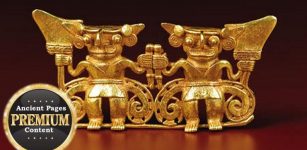 Bolivia And The Mystery Of The Twins Of Atlantis
Featured Stories | Nov 16, 2014
Bolivia And The Mystery Of The Twins Of Atlantis
Featured Stories | Nov 16, 2014 -
 Rare 13,000-Year-Old Artifacts And Paleoindian Camp Uncovered in Connecticut Shed New Light On The First Ancient People In America
Archaeology | Mar 18, 2022
Rare 13,000-Year-Old Artifacts And Paleoindian Camp Uncovered in Connecticut Shed New Light On The First Ancient People In America
Archaeology | Mar 18, 2022 -
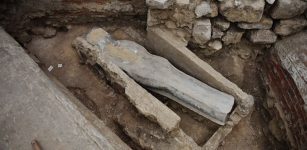 Mysterious Leaden Sarcophagus Found Under Notre Dame Will Be Opened
Archaeology | Apr 17, 2022
Mysterious Leaden Sarcophagus Found Under Notre Dame Will Be Opened
Archaeology | Apr 17, 2022 -
 Hidden Tunnel In Tokat Castle – ‘The Dungeon Of Dracula’ – To Open Soon
News | Sep 22, 2015
Hidden Tunnel In Tokat Castle – ‘The Dungeon Of Dracula’ – To Open Soon
News | Sep 22, 2015 -
 Is Legendary Norumbega In North America A Lost Viking Settlement?
Featured Stories | Jan 8, 2021
Is Legendary Norumbega In North America A Lost Viking Settlement?
Featured Stories | Jan 8, 2021 -
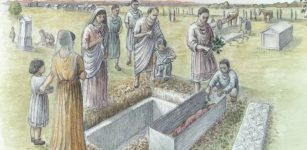 Who Was The Mysterious Spitalfields Roman Noblewoman Dressed In Silk Found In A Sarcophagus In London?
Archaeology | Dec 21, 2020
Who Was The Mysterious Spitalfields Roman Noblewoman Dressed In Silk Found In A Sarcophagus In London?
Archaeology | Dec 21, 2020 -
 Wanyūdō The Soultaker – Fearsome Yōkai In Japanese Mythology
Featured Stories | Nov 22, 2017
Wanyūdō The Soultaker – Fearsome Yōkai In Japanese Mythology
Featured Stories | Nov 22, 2017 -
 Are Thunderbird Petroglyphs In Bighorn Basin Linked To Golden Eagle Nests?
Civilizations | Apr 26, 2017
Are Thunderbird Petroglyphs In Bighorn Basin Linked To Golden Eagle Nests?
Civilizations | Apr 26, 2017 -
 Hidden Giant Tombs In Armenia Remain An Ancient Mystery
Featured Stories | Nov 9, 2017
Hidden Giant Tombs In Armenia Remain An Ancient Mystery
Featured Stories | Nov 9, 2017 -
 Odd Ancient Dwellings Of The Snake People – American-European Connection Part 1
Featured Stories | Sep 6, 2020
Odd Ancient Dwellings Of The Snake People – American-European Connection Part 1
Featured Stories | Sep 6, 2020 -
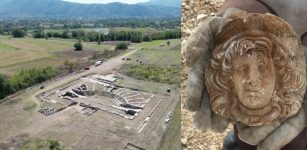 Roman ‘Backwater’ Challenges Major Assumptions About The Ancient Empire’s Decline
Archaeology | Dec 12, 2023
Roman ‘Backwater’ Challenges Major Assumptions About The Ancient Empire’s Decline
Archaeology | Dec 12, 2023 -
 Sobek: A 2,500-Year-Old Mummified Nile Crocodile – On Display At The British Museum
Archaeology | Dec 9, 2015
Sobek: A 2,500-Year-Old Mummified Nile Crocodile – On Display At The British Museum
Archaeology | Dec 9, 2015 -
 Still Intact Renaissance Shipwreck Discovered On The Baltic Seabed
Archaeology | Jul 24, 2019
Still Intact Renaissance Shipwreck Discovered On The Baltic Seabed
Archaeology | Jul 24, 2019 -
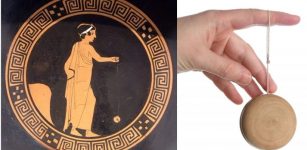 Oldest Yo-Yo Dates Back To 400-500 B.C
Ancient History Facts | May 13, 2019
Oldest Yo-Yo Dates Back To 400-500 B.C
Ancient History Facts | May 13, 2019 -
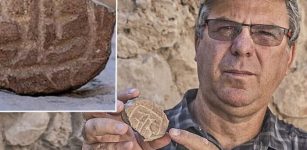 A Seal Impression Dated To Persian Period Discovered In The City Of David
Archaeology | Jul 3, 2020
A Seal Impression Dated To Persian Period Discovered In The City Of David
Archaeology | Jul 3, 2020 -
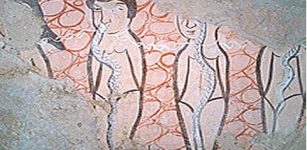 Ancient Monastery In The Middle Of ‘Syria’s Stonehenge’ – Underground Caves, Tombs, Stone Circles Older Than Pyramids
Civilizations | Nov 13, 2015
Ancient Monastery In The Middle Of ‘Syria’s Stonehenge’ – Underground Caves, Tombs, Stone Circles Older Than Pyramids
Civilizations | Nov 13, 2015
